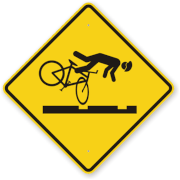|
cheese eats mouse posted:Not really sure where to put this it might be a more advanced question for a full thread. My oldest dog Condie has been an only dog for most of her life and she has some signs of only dog syndrome. She HATES sharing toys and will start fights with any dog that plays with her toys. Problem is she sees ANY toy brought into the house as hers and it's not fair of me to expect a dog to differentiate between yours and mine (can dogs dog this? I'm not really sure?) For management: take toys out of the picture when they're both loose together. Dogs play without toys. If they're starting fights with nothing around then you need to teach Condie that the other dog's presence is the best thing ever, which is harder. For training: Use barriers - a crate, an ex-pen, even a solid door. Settle Condie - you can use a stuffed kong in a crate if you need to, then reinforce with food while your other dog plays with toys. When she's OK with the other dog playing nearby, then you can up to both dogs playing separated by a barrier. Get identical toys, toss them so the dogs are headed away from each other. In all of this, Condie's job is to ignore the other dog, not play with her. Do not expect a dog that is a resource guarder to ever completely extinguish the behavior - never leave her alone with another dog with toys in the mix.
|
|
|
|

|
| # ? Jun 10, 2024 18:06 |
|
Engineer Lenk posted:For management: take toys out of the picture when they're both loose together. Dogs play without toys. If they're starting fights with nothing around then you need to teach Condie that the other dog's presence is the best thing ever, which is harder. Yea she is also isn't too happy about the new dog, but she was the same way with my little guy Cash for a few weeks. The new girl, Honey, has been on crate rest this week and I've kept her crate in the main hangout area. Tensions/stress are a little high, but it has cooled off with some small group walks and time. It's mostly dinner time and any toys (so resource guardy yep). I've planned on just taking turns in the crate with play time. I'll take some tips on making the transition easier on everyone though. I can feed them treats sometimes and just go the line with a hot dog pieces when they're together. Honey has only been in the house since Sunday so I'm not expecting too much too soon.
|
|
|
|
Engineer Lenk posted:Have you ever had a really bad outcome? I think that may change some of the level of emotion in the happy goodbyes. Jesus. We've never had anything like that happen. I did have one client who did zero homework and couldn't seem to figure out why the dog didn't pull on leash with me but still did with her, no matter how hard I reminded her that dogs don't generalize well, that she needed to put the effort in as well, etc etc. I was pretty pleased to see the end of those sessions as they were discouraging for all of us. I've just gotten pretty lucky in the recent past I guess. I've only ever had to decline someone once at the evaluation because what they wanted was what we call a "dead dog impression," not an actual trained dog. Probably one of the best things I learned early on was to say no if you don't believe there will be compliance. Poor follow-through leads to poor outcomes, which leads to dissatisfaction and bad reviews. I am curious now though, the handler didn't die in class or anything, did they?
|
|
|
|
ButWhatIf posted:I am curious now though, the handler didn't die in class or anything, did they? No, no. I posted about it in the dog sports thread when I was first processing it. The handler came down with AML, his son took over running the dog for the following six-week class and he was gone before it ended. He was only in his fifties and ridiculously athletic, so it hit really hard. The rest of the family came in for one last class after his owner passed, to take some video of the dog. Only Ali (trainer) and I knew what had happened and we were barely holding it together. The worst injury in class was a broken foot (she tripped over the side of a jump and fell just wrong). Haven't had any lasting dog injuries, though.
|
|
|
|
Engineer Lenk posted:The worst injury in class was a broken foot (she tripped over the side of a jump and fell just wrong). Haven't had any lasting dog injuries, though. ButWhatIf, don't worry about caring about your clients. I've had some instructors become friends and have had the same happen to people I know.
|
|
|
|
ButWhatIf posted:Probably one of the best things I learned early on was to say no if you don't believe there will be compliance. Poor follow-through leads to poor outcomes, which leads to dissatisfaction and bad reviews. I'm curious, how do you go about turning these people down? Obviously you can't just be like, "look, I know you're going to be a stupid lazyass who doesn't do the homework, you're not worth my time." As much as we may want to, sometimes.
|
|
|
|
Skizzles posted:I'm curious, how do you go about turning these people down? Obviously you can't just be like, "look, I know you're going to be a stupid lazyass who doesn't do the homework, you're not worth my time." As much as we may want to, sometimes. In those situations, if I feel like it's not going to be a good fit, what I generally do is give the owners as much info and input as I can, offer suggestions and books and articles, then shake hands and say "feel free to contact me if you need more information." It happens really infrequently, and mostly it's self-selecting - generally if there's a reason it won't work, like the owner still only believing in dominance theory, they just doesn't convert from evaluation to package and we never hear from them again. Or if we do, it's a year down the line after they've done somewhere that requires shock collars and alpha rolls and the problem they were looking to resolve has worsened and they're ready to try something different. It seems to work pretty well, overall, and you're really not going to mesh with every single potential client, so having a smooth system is useful.
|
|
|
|
Has anyone here heard of Dee Ganley? She is about an hour away from me and has an apprenticeship program. It's completely out of the question for right now since it's pricey and I'm having a bitch of a time finding a job, but I was curious what, if anything, anyone knew about her. Here's the website.
|
|
|
|
Not heard of her. Sorry.
|
|
|
|
So, Winston has recently had a few accidents in the house. Nothing in his routine or diet has changed. He's barely two, so it's not old age. The first 6mo he was with us was fine, as well as the 3-4mo he was with his foster mom. I wrote the first time off as an upset stomach, but it happened a few days later. So, we went back to kenneling him anytime we would be gone more than 5-10min (we did so for the first month, but stopped). His foster never kenneled him while she was at work, even though he's well trained to one, and it was never an issue. He's not being left along for long stretches either. Between me, my girlfriend, and our roommate, he might be alone for 4-5hrs, at most. Anyway, things were going fine, but our roommate has a bad habit of not kennelling him, despite us asking him to. He'll kennel him 4 times out of 5, but twice now Winston's had an accident when he wasn't kenneled (there have been just as many days he hasn't been kenneled and been fine though). He always goes in the same place, the tile (thankfully) in front of the front door, which isn't even the door he "goes" out.
|
|
|
|
I want to teach our big dumb dog more dumb tricks. He's really pretty smart, for a retriever - he has a great "sit", "down" is pretty good, "stay" is good when I do it but not for my husband, "speak" is GREAT (ie loud) for my husband but only okay for me, he knows "leave it", "cool it" because I'm pregnant and he gets too rambunctious sometimes, "up" which he's recently started holding because we coo over him when he stands up like a people, and "shake". Hardly a huge repertoire of dog tricks, but he picked them all up really fast and is great with hand OR verbal cues. I was trying to start teaching him to roll over on the weekend, but he just won't roll. I was trying to lure his head to his shoulder-ish area so he'd HAVE to roll over... and instead he'd just shift his whole body sideways to face toward the treat. There has to be a better way to do it, right? He doesn't ever roll on his own (but he does show his belly for rubs) so I can't really capture it. I did get him doing a pretty sweet army crawl across the floor before he started to get frustrated, though. The big dummy.
|
|
|
|
My penny hate's rolling over for some reason. I had good success teaching her bang you're dead though. Rolling to her side is apparently fine.
|
|
|
|
Tourette Meltdown posted:I want to teach our big dumb dog more dumb tricks. He's really pretty smart, for a retriever - he has a great "sit", "down" is pretty good, "stay" is good when I do it but not for my husband, "speak" is GREAT (ie loud) for my husband but only okay for me, he knows "leave it", "cool it" because I'm pregnant and he gets too rambunctious sometimes, "up" which he's recently started holding because we coo over him when he stands up like a people, and "shake". Hardly a huge repertoire of dog tricks, but he picked them all up really fast and is great with hand OR verbal cues. I was trying to start teaching him to roll over on the weekend, but he just won't roll. I was trying to lure his head to his shoulder-ish area so he'd HAVE to roll over... and instead he'd just shift his whole body sideways to face toward the treat. There has to be a better way to do it, right? He doesn't ever roll on his own (but he does show his belly for rubs) so I can't really capture it. I did get him doing a pretty sweet army crawl across the floor before he started to get frustrated, though. The basic idea is for you to have the dog laying down. Take a treat and hold it close to the dog's nose. At no point should the treat be more than 1-2" from its face. Slooowly move the lure to the ground then over to the dog's arm pit or shoulder blade. If the dog is still following the treat with its nose it should drop its shoulder to keep following the lure. Once you get the shoulder movement, you continue drawing it SLOWLY away from the dog, perpendicular to the line of its spine. The idea is that it should be easier for the dog to roll onto its back to follow the treat than for the dog to spend energy to get up and re-position. Once you get that far, you've hit the home stretch and you just continue to move the treat away from the body until you elicit a full rotation. It sounds like you have the basic idea. Most people run into trouble at the shoulder-dropping step, or the beginning of the roll. A lot of dogs will simply stop following the lure, or they'll get up. This is where you start segmenting your goal behaviour. You will shape your dog to follow the lure better. There's a saying in dog training: "be a splitter, not a lumper". This means, when behaviours get tricky, split them into smaller parts that are easier for your dog to achieve. If you try to lump a behaviour together without providing the proper instructions to your dog, both you and your dog will get frustrated. So, if you're having trouble with him shifting his body at a certain point, start giving him the lure shortly before he gets to that stage. Start rewarding him for following it with his nose while staying in the position you want. Then start asking him for a little more -- follow the lure a little further before getting rewarded. Your dog should eventually clue into the rules of the game and will do his best to follow those rules to get that reward.
|
|
|
|
a life less posted:The basic idea is for you to have the dog laying down. Take a treat and hold it close to the dog's nose. At no point should the treat be more than 1-2" from its face. That's got to be where I was messing him up - treat too far away! Hopefully we can do this without him slobbering all over my hand. He picked up everything else (except "speak", which took a few tries) with hardly any work at all, so it makes sense that it would be me messing him up trying to teach a slightly unintuitive behavior.
|
|
|
|
Hdip posted:My penny hate's rolling over for some reason. I had good success teaching her bang you're dead though. Rolling to her side is apparently fine. My dog is very much the same way, even when he was younger before he got Sore Old Man Joints. I have NEVER witnessed him roll over or lay on his back in any way. Some dogs just don't dig it, so I never forced him into it. But yes, he will do "bang!" and lie on his side for a second.
|
|
|
|
Skizzles posted:My dog is very much the same way, even when he was younger before he got Sore Old Man Joints. I have NEVER witnessed him roll over or lay on his back in any way. Some dogs just don't dig it, so I never forced him into it. But yes, he will do "bang!" and lie on his side for a second. This is totally the next trick.
|
|
|
|
Skizzles posted:My dog is very much the same way, even when he was younger before he got Sore Old Man Joints. I have NEVER witnessed him roll over or lay on his back in any way. Some dogs just don't dig it, so I never forced him into it. But yes, he will do "bang!" and lie on his side for a second. Psyche sleeps on her back with her legs in the air (it's not very ladylike  ) and I taught her to roll over by trying the luring thing, getting impatient, and then just pushing her over. It worked and she rolls over all the time now. But I've never been able to teach her play dead, apparently being on your back is fine, being on your side is submissive and scary. ) and I taught her to roll over by trying the luring thing, getting impatient, and then just pushing her over. It worked and she rolls over all the time now. But I've never been able to teach her play dead, apparently being on your back is fine, being on your side is submissive and scary. 
|
|
|
|
I actually trained his "bang!" cue completely by accident via back-chaining.
|
|
|
|
I'm teaching Psyche to cross her paws using a target. Any tips on removing the target once she starts crossing her paws? I started moving it a little bit farther, but she just re-adjusts her position to be closer. She'll do it if I hold the target next to her paw and we've worked on duration a bit.
|
|
|
|
Kiri koli posted:I'm teaching Psyche to cross her paws using a target. Any tips on removing the target once she starts crossing her paws? I started moving it a little bit farther, but she just re-adjusts her position to be closer. She'll do it if I hold the target next to her paw and we've worked on duration a bit. Try making the target progressively smaller.
|
|
|
|
Reason #101 to teach a strong Leave It.
|
|
|
|
Speaking of leave it, I've decided I really need to work on this because the assholes at my apartment complex apparently love to throw chicken bones down on the ground where dogs can happily grab a snack. I've tried introducing "leave it" using the basic "no mugging" exercises, but Bailey can and will try to mug my hand repeatedly. He'll stop, and then start again. How can I make progress teaching leave it? Am I going about it the wrong way?
|
|
|
|
Click when he stops?
|
|
|
|
I don't use a clicker for leave it at all. Just wait out the extinction burst, even if it takes a super long time. You really want the "mugging" to extinguish completely before rewarding for the new "behavior" (or lack thereof). Start small, build to chicken, generalize to paper, shoes, etc.
|
|
|
|
^^ I don't understand why you wouldn't use a clicker for an operant behavior.Ikantski posted:Click when he stops? This. Click the second he leaves it alone. It's rare, but occasionally that's something we'll shape. I've seen it done in class, but I've never had to do it with a dog myself. Usually it's just a waiting game and then being on your guard and ready to click and reward as soon as you have the opportunity. The two mistakes people always make in class are either not being patient enough while waiting for the dog to stop mugging, or they expect their dog to leave it for like an hour when they finally give up. Start with baby steps.
|
|
|
|
It's a little easier to juggle everything and time your clicks if you teach leave it under your foot rather than out of your hand. Same principle, just inch your foot covering the treat up rather that opening your hand.
|
|
|
|
MrFurious posted:^^ I don't understand why you wouldn't use a clicker for an operant behavior. I don't use a clicker for a lot of behaviors. It's not a magic bullet, and a lot of my clients just cannot get the timing down. I would rather not have them use it than have them marking superstitious behaviors (at best). With "leave it," it's not a matter of pinpointing an exact moment. It's a matter of allowing an extinction burst to occur. I don't think most people click for night-time crating either when their new puppy finally stops shrieking and goes to sleep. Your mileage may vary, and if you do it different, good on you. Seriously. Do what's working for you. We all have different styles. Personally, I don't believe in sacred cows or color-by-numbers training; I do what's humane, ethical, and effective (in that order), but I don't need or want one particular tool or ideology to color how I work with my clients. 
|
|
|
|
One other thing - where does the treat come from for 'leave it'? If you give them the treat that they left (or from the same hand that they left), the behavior can get confused, but I've seen a number of people who teach it this way. When I teach leave it, the thing I asked them to leave is never given to them (unless it gets dumped back in the treat bag and they get it later).
|
|
|
|
Engineer Lenk posted:One other thing - where does the treat come from for 'leave it'? I make sure to treat with the other hand. I guess I just need to work on timing.
|
|
|
|
Can anyone give me some insight into why an otherwise non-aggressive dog would bite and growl at people on walks, but not in her own house? This isn't my dog, she's the dog of the family I work for (I watch their kids full time and help take care of the dog while I'm there, so I see the dog every weekday). The dog loves me and loves the kids. She's a 2 year old maltipoo. When other people come to the house she barks like loving crazy and sometimes growls, but once she approaches and smells the person she immediately calms down, never snaps at anyone. Anyway, this dog is absolutely awful on walks. She tugs and swerves in front of me and yips like half the time, like she can't contain herself even though she goes on walks regularly. Every time you take her for a walk she acts like she's never been outside and also never seen a human being. She barks at everyone, whether they're walking towards us or on the other side of the god drat street or a block away getting out of their car. I always tell her "no" and stop walking until she quits barking, and once she stops barking and generally settles down I will praise her and continue to walk. It's made no difference and I've been doing this on my walks with her for over a year now. But it got more alarming recently when we took her on a walk to the park. We were sitting on a bench and the dog was barking and snarling at this lady who was there with her toddler. I was super apologetic, especially since I didn't want the dog to scare the kid, and the lady was really nice and understanding about it. The lady squatted down and was talking in a sweet voice to the dog, and she put her hand out - not in the dog's face, but at a cautious distance - and the dog loving lunged at her and bit her. Not hard, mind you, but I was totally mortified. Everyone else has told me "just don't take the dog for walks," but won't shielding her from the outside world just make her more unfriendly? Also, why the hell does she flip out so much at absolutely everything when we're outside of her house? I would think she would be more aggressive at home because she'd be territorial/protective, but she's way more friendly at home. What gives, and is there anything I can do?
|
|
|
|
Budget Bears posted:Everyone else has told me "just don't take the dog for walks," but won't shielding her from the outside world just make her more unfriendly? Also, why the hell does she flip out so much at absolutely everything when we're outside of her house? I would think she would be more aggressive at home because she'd be territorial/protective, but she's way more friendly at home. What gives, and is there anything I can do? Barrier frustration/leash reactivity. It's not terribly uncommon. Don't let people get close to the dog, but you can keep taking her for walks. Take some high-value treats with you, and treat when she notices a person, even if she's flipping out. Eventually she'll connect seeing strangers with good treats, and her emotional reaction will lessen. If she's too wound up to take treats, stay further away from strangers - get good at turning the other direction and walking away if someone comes up on you all sudden.
|
|
|
|
I don't have a lot of faith in your ability to change this dog's behaviour if you only have access to her some of the time. Best case scenario would probably be a band-aid solution rather than something that will create true change. But that may be enough for you. Read up on dog fear and reactivity. Try Scaredy Dog by Ali Brown. http://www.dogwise.com/ItemDetails.cfm?ID=dtb799 Understand her threshold and how to manage it. As you found out, putting her in a situation where she was uncomfortable enough to lash out and make contact with a stranger attempting to greet her was a bad idea. She's insecure and she's craving space. Be proactive and ensure she always has that space she wants. As she gets more secure (via the methods Lenk mentions, and ones described in detail in that book) she'll require less space. Dogs don't have to be friendly with everyone they meet, ideally she should eventually learn to tolerate the presence of strangers on the street. If you're able to lay the groundwork for good behaviour via rewarding focus and attention with food around her triggers you'll give her something else to do other than bark her fool head off.
|
|
|
|
My wife and I are having some problems with one of our dogs. She's basically regressing from being housebroken to now going in the house at least once or twice a day no matter how often she's let out. She pees nearly every time she's out, but it's hard to get her to stop chasing after (phantom) squirrels and staring at our trees. We tried keeping her on a schedule for going out, but that didn't work--she would pee outside and then pee inside an hour or so later. We adopted her about six month ago and had some aggression issues with our other dog that we worked out with a trainer, but nothing we do about this issue seems to be sticking with her. Scheduled outside visits don't seem to work; letting her out every 2 hours doesn't seem to work; letting her out when she signals doesn't seem to work. We can't leave her out right now without supervision because she's capable of jumping part of our fence (being fixed in the next couple of weeks), but even having her outside for 30+ minutes doesn't seem to affect it at all. We've taken her to the vet and there's nothing physically wrong with her. It's been getting worse, too. Initially there were no accidents, then a couple a week, to now it's pretty much a daily occurrence. What are we doing wrong? What can we do differently?
|
|
|
|
Tolan posted:What are we doing wrong? What can we do differently? Tether or crate when she's inside, go back to the schedule for taking her out, and take her out on a leash until she pees, praise and then let her off to go chase squirrels or stare at trees. Clean every spot inside that she's peed on with enzymatic cleaner. Basically, go back to square one with housebreaking and monitor her closely enough that she doesn't get the chance to pee in the house. Relax your protocols slowly once she goes a couple of weeks without peeing inside, and go back to full monitoring for about a week if she messes up.
|
|
|
|
Engineer Lenk posted:Tether or crate when she's inside, go back to the schedule for taking her out, and take her out on a leash until she pees, praise and then let her off to go chase squirrels or stare at trees. Clean every spot inside that she's peed on with enzymatic cleaner. OK. We'll give this a shot. Thanks.
|
|
|
|
My dog didn't eat much yesterday, then pooped a lot last night. I was concerned, and then this morning my dad asked me if I had set down any of the bran muffins my mom made yesterday on the couch. Apparently he had been straightening out the blankets that Beartato likes to sleep on and a muffin had fallen out. Yesterday mother had set the delicious bran muffins out to cool on the dining room table in a room that the dog hasn't had free access to until recently. Here's the thing- he stole so many muffins that he stopped eating them and started hiding them. He's no longer allowed in the area unsupervised, which sucks because you have to go through the kitchen to do anything in this house. What's the best way to teach him to not be a dirty little thief?
|
|
|
|
Dogdoo 8 posted:What's the best way to teach him to not be a dirty little thief?
|
|
|
|
I like that game. Let's you incorporate a leave it as well.
|
|
|
|
Rixatrix posted:Do this and stick with it: http://www.youtube.com/watch?v=ipT5k1gaXhc That is totally loving cool. I'm going to teach this in my conformation classes to teach dogs in a show ring not to hoover on the go-arounds or to stand for focus when bait is thrown. Thanks!
|
|
|
|

|
| # ? Jun 10, 2024 18:06 |
|
SachielDVangel posted:That is totally loving cool. I'm going to teach this in my conformation classes to teach dogs in a show ring not to hoover on the go-arounds or to stand for focus when bait is thrown. Thanks! All dogs should know IYC. You should totally incorporate it. I would love to hear how you structure your classes, what you teach and how. I'm totally unfamiliar with conformation training.
|
|
|




















